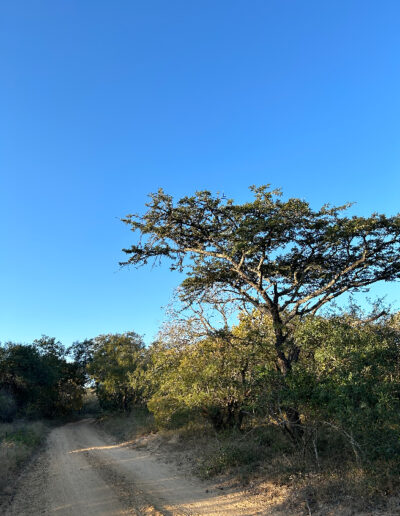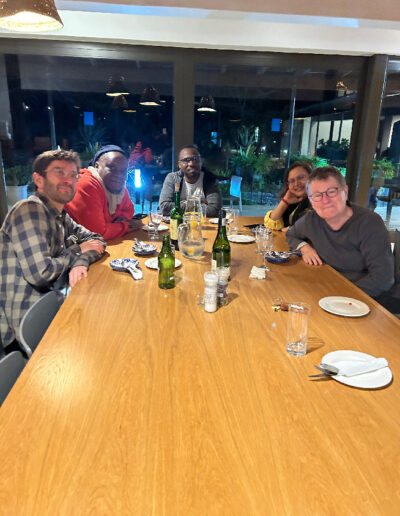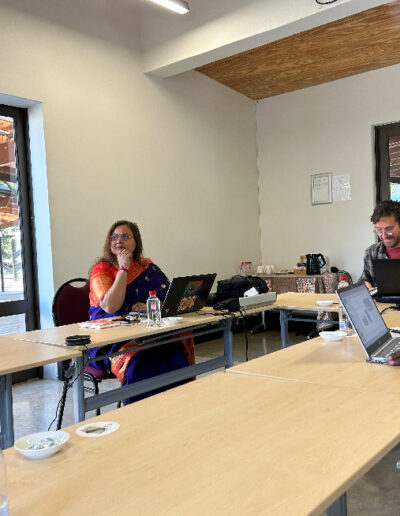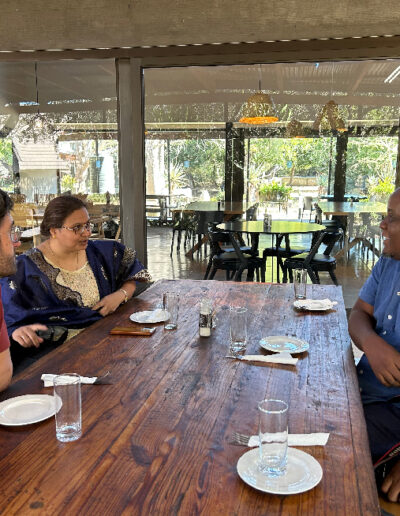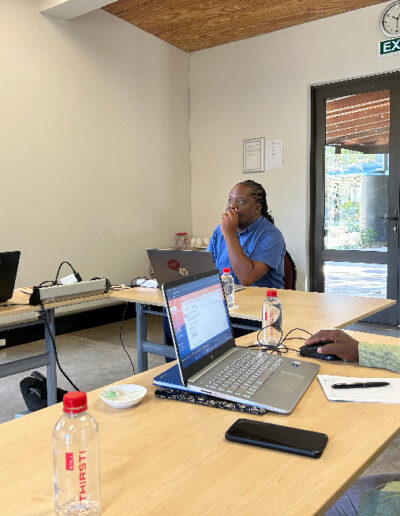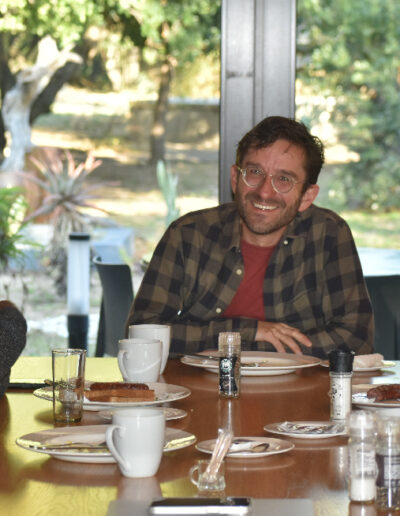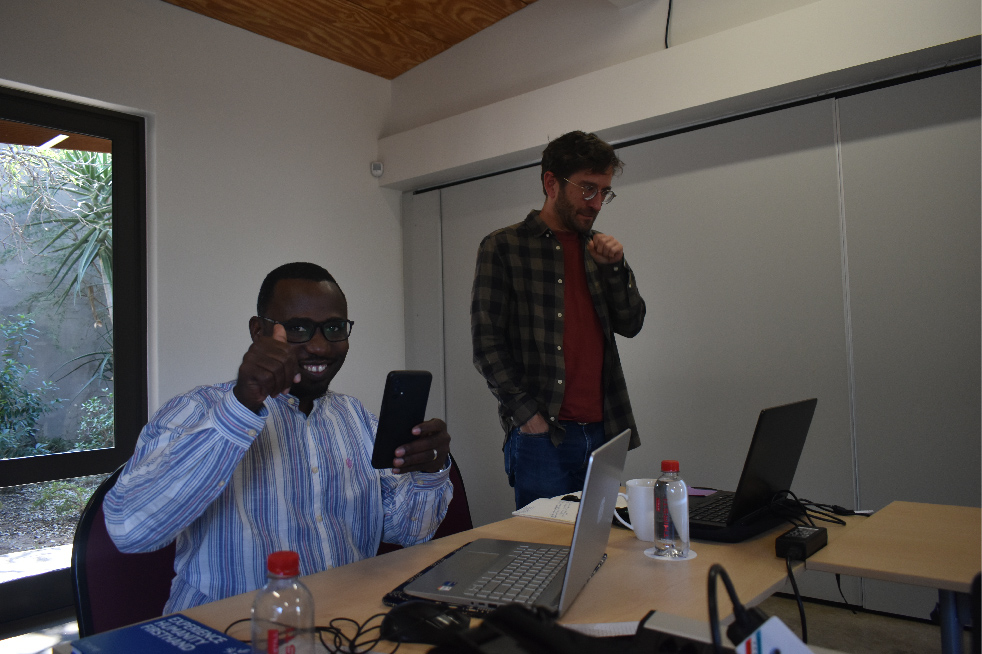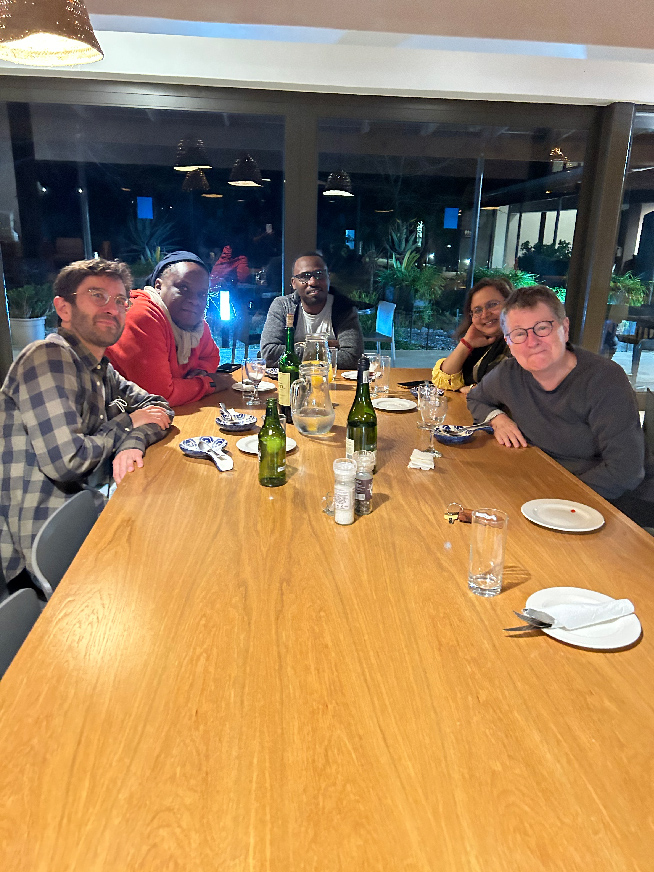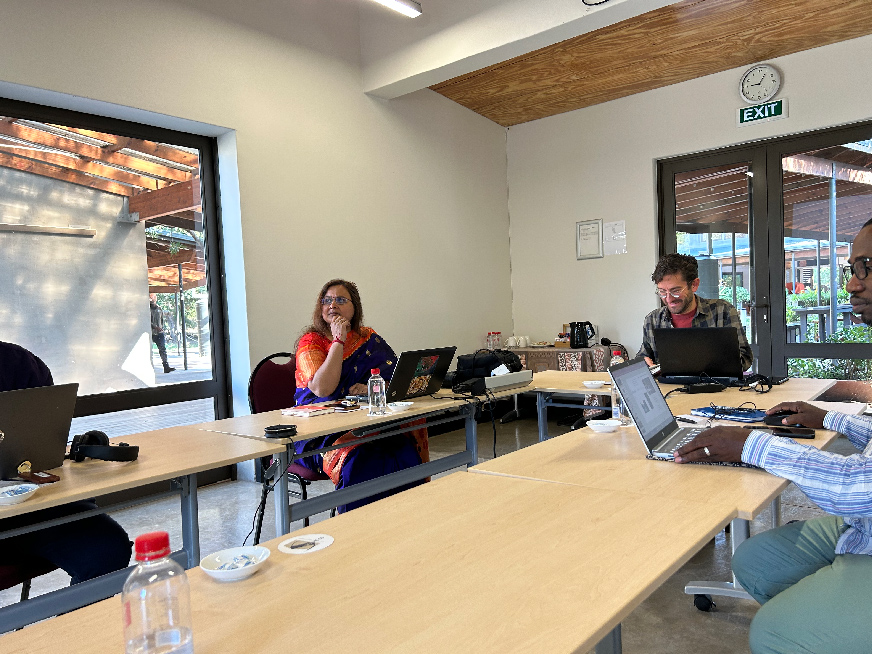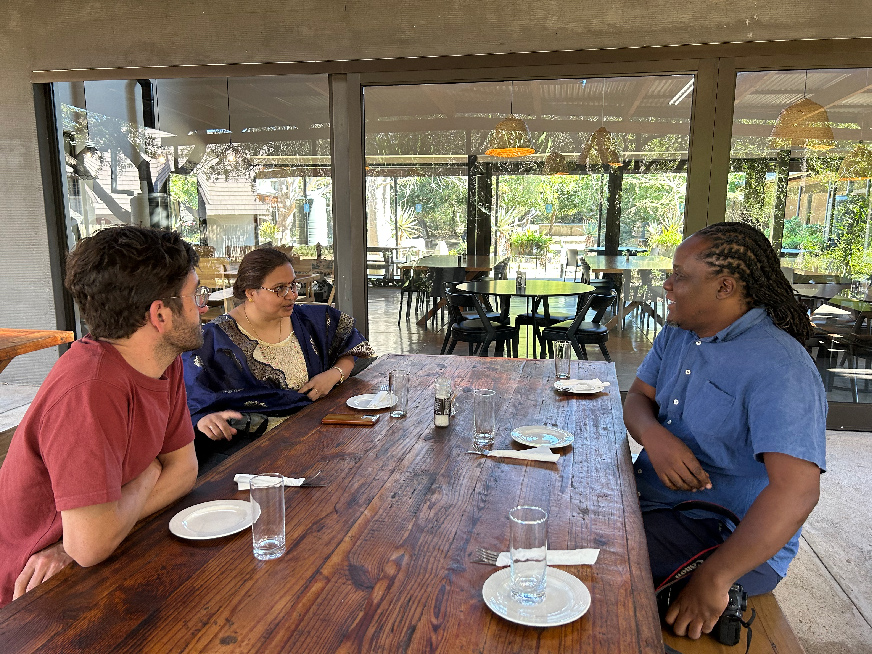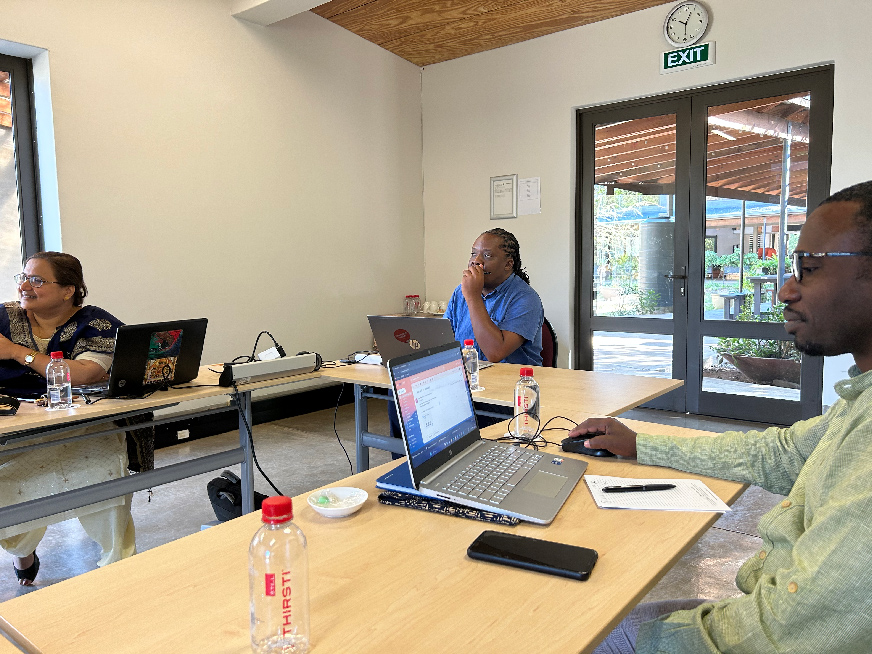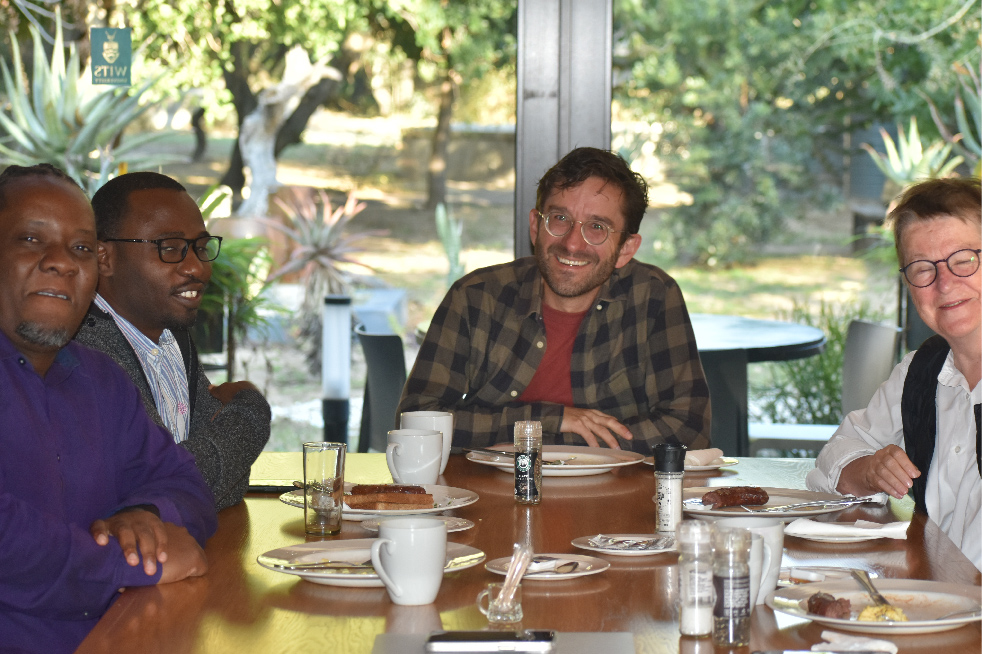The Workshop
Overview
The group met for a final in-person meeting held in South Africa 12-13 June 2023. Each member of the team presented and discussed papers that summarised their findings, ultimately leading to the production of a section of a special issue of an academic journal. Explore each authors topic and abstract below.
June 12
9:00 am
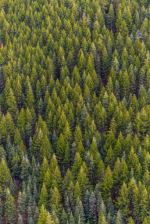
FEELING LIKE A FOREST
What might the historical record of human-ecology relations sound like? The languages of people that live intimately with the forest embody generations of ecological knowledge and adaptation.
View more
In addition to lexicons of flora, fauna, and landforms, linguistic performances and oral arts give form to the experiences of living forests. In many languages, a special class of words called expressives or ideophones enables speakers to depict vivid sensory perception making use of culturally specific linkages between sound and meaning. In the Bit language spoken in northern Laos, expressive words also preserve ancient grammatical rules that allow them to mark a range of temporal and spatial experiences that cannot be done in “regular” verbs and adjectives. Listening to expressives that Bit speakers use to depict life in the forest highlight intersections between cultural/linguistic history and dynamic human/non-human dependencies, we can get a sense of how people feel about the forest, how they feel in the forest, and perhaps how it feels to be a forest.
June 12
10:00 am
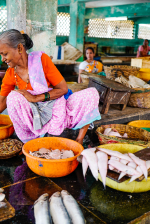
FISHSCAPES: ANCHOVIES, NAIRS, AND THEIR FISHY EPISTEMOLOGIES
Sunil D. Santha, Centre for Livelihoods and Social Innovation, School of Social Work, TISS
This paper is about Fish, Humans, and their entangled patchy epistemologies. Autoethnographic by design, I have adopted a posthuman lens to interweave diverse knowledge frames.
View more
Both Anchovies and Nairs are positioned as analytical metaphors to explore the entangled nature of Fish and Humans in a more-than-human world. A few years ago, I wrote a paper exploring the changes happening to middle-class Nair families near Technopark in Thiruvananthapuram, Kerala. The analysis then followed more of a humanist lens with Nature in its periphery and was specific to the contexts that prevailed before the outbreak of the Covid-19 pandemic. Simultaneously and distinctly, I also studied the transitions happening to small-scale fisheries in the context of modernisation, development, and climate change. Both works never gazed at each other.
However, post-pandemic, as I engaged more with posthuman literature, I could see the entangled emergent relations between Fish, Fishers, and Fish Consumers. This paper explores the patchy epistemologies that shape the entanglements and transitions between the Fish (Anchovy) and the Fish Consumers (Nair Women, Men, and Children). As the title of this paper mentions, such an approach is quite fishy in terms of its thinking and approach, which could also evolve as its strength, showcasing newer possibilities of archiving environmental change. Fish-Fisher entanglements are not the prime focus of this paper, which I have dealt with elaborately elsewhere. Instead, here the focus is on the entanglements between Fish and Fish eaters.
Anchovies were once part of the staple diet of the Nair households that I am describing in this paper. These small, shiny fish were a delicacy as a curry that went well with smashed and cooked tapioca or jackfruit and with rice. Fried anchovies were a favourite among children. Dried anchovies and chutneys made from them were the primary sources of protein supplements during the lean fishing seasons, the monsoons. However, these days very few households buy anchovy. My inquiry for this paper begins here. How did the anchovy disappear from our everyday life? What does it say about modernity, development, and environmental change?
June 12
11:30 am
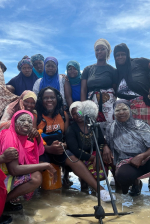
A SONIC APPROACH TO VERNACULAR ARCHIVES AND CULTURAL MEMORY OF THE FISHING COMMUNITIES OF MOZAMBIQUE ISLAND
Mozambique Island, a UNESCO World Heritage site off the coast of northern Mozambique, is renowned for its diverse cultural history shaped by African, Arab and Portuguese traditions.
View more
The island is home to fishing communities deeply connected to the Indian Ocean, carrying their distinct cultural practices and knowledge across generations.
However, the intersection of vernacular archives, cultural memory, and sound in these communities remains understudied.
This paper explores the role of sound, particularly fisherman and chocolo women songs (anthropophony) and environmental sounds (geophony), in the preservation and transmission of cultural memory within these fishing communities.
Cultural memory is a central topic in the humanities and social sciences, examining how memory is collectively constructed and transmitted in diverse cultural contexts. Scholars like Halbwachs (1925), Nora (1992) and the Assmanns (1994) have explored the role of social context, institutions and historical events in shaping cultural memory. Recently, sound has gained recognition as a research method for studying cultural memory and vernacular archives. Sound captures intangible aspects of cultural heritage, revealing lived experiences and social dynamics. Sonic methods like sonic ethnography Sterne (2003) and Feld (2012), and soundwalking Schaffer (1994), Truax (1994) and Pijanowski et al (2011), allow for direct engagement with communities, uncovering embodied practices and the meanings attached to sounds, providing deeper insights into cultural significance.
A sonic ethnography approach was employed for this project, involving immersive fieldwork and data collection. Audio recordings were captured using a combination of 360° and stereo techniques, to capture fisherman and chocolo women songs, and environmental sounds. Interviews were conducted to delve into the cultural meanings and significance attributed to these sounds. The collected audio recordings and interview transcripts were examined through interpretive analysis, including close listening, transcription and thematic analysis.
The analysis focused on identifying recurring themes, patterns and meanings within the sonic elements of vernacular archives. It also explored the role of soundscapes, music and other sonic practices in the preservation and transmission of cultural memory. Specific case studies were examined to illustrate how sonic elements contribute to the cultural memory of fishing communities. The sonic approach shed light on the unique aspects of cultural memory within fishing communities and provided a deeper understanding of their cultural identity and socio-environmental relationships.
The findings were interpreted in relation to existing literature on cultural memory and vernacular archives. The implications of the sonic approach to studying cultural memory in fishing communities were analyzed, highlighting its potential for capturing intangible aspects, engaging with sensory dimensions, and amplifying marginalized voices. The discussion explored the challenges and opportunities of incorporating a sonic approach in the study of cultural memory, including the historical and societal factors contributing to the marginalization of certain communities in official archives. The paper also addressed the need to overcome visual bias and methodological challenges to embrace the significance of sound in shaping memory and cultural identity.
This project’s sonic approach to studying the vernacular archives and cultural memory of fishing communities on Mozambique Island, offers valuable insights into the role of sound in preserving, transmitting, and shaping collective stories. By uncovering the complexities surrounding representation and inclusion, the study emphasized the empowering potential of songs as forms of cultural resistance and preservation. The findings contribute to the field of cultural memory studies and vernacular archives, offering recommendations for future research and exploration of sound-based approaches to enhance community identity, resilience, and social justice initiatives.
June 12
1:30 pm
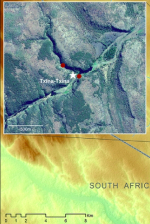
THE SEDIMENTS IN AN ARCHAEOLOGICAL CONTEXT AS A PALEOENVIRONMENT ARCHIVE
Mussa Raja, Eduardo Mondlane University
This study aimed to reconstruct Txina-Txina site (located between the junction of Machampane and Chifati rivers, Southeastern Mozambique) paleoenvironment and site formation processes.
View more
June 12
2:30 pm

KAMMAKAMMA/ THE EERSTE RIVER IN FRAGMENTS
My presentation to the group some months ago focused on sand as a lens to explore environmental change in and around a sacred Muslim tomb (kramat) located on the False Bay in South Africa, which has been part of my research for some years.
View more
The text I’ve submitted for this workshop is a creative piece that stems from my interest in the environment that surrounds the tomb. While sand forms a part of the story I’ve attempted to piece together, the main environmental focus is the Eerste River. This 40 km-long river flows past the kramat and into the False Bay. My piece serves as a contribution to a broader sound and visual work about the Eerste River by South African artist Abri de Swart. You can read about this project, entitled kammakamma, here.
In this text, the river offers a way for me to rethink the archival and oral history fragments I collected during my research that, when placed in conversation, demonstrate the river’s entanglement with many layers of history and memory. This includes the social history of Cape Town’s marginalised populations, early modern forced migration in the Indian Ocean world, and the locals’ personal stories.
The text is written to be performed (as part of a screenplay), but I hope to adapt it for publication, hopefully alongside your pieces. I’ve left in the comments that reference the
intended performance.
June 13
09:00 am

THERE’S A BUG IN MY MEDIA: INSECTS, COLONIAL ARCHIVES AND BOOK HISTORY
Traditionally a ‘dry’ discipline little concerned with ecocritical themes, book history has started to engage with environmental humanities in a more sustained way.
View more
June 13
10:00 am
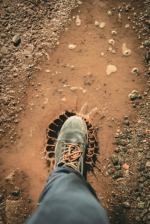
THE IMPORTANCE OF LISTENING TO MUD
What does mud sound like? Sloppy, drippy, squelchy, oozing, belching, splattering – are these the words that come to mind? Or is that just a conception of mud from our limited human interactions with muddy environments?
View more
Mud is a kind of living mausoleum, or an eclectic library whose pages are all stuck together. Like these places, mud is an environment that starts from nothing and then accumulates. Mud has a preference for collecting things that are miniscule, malodorous and apparently no longer wanted elsewhere. Collectively these things can tell a story, and that story could have its own soundtrack. From this point of view, if mud could speak it might sound a lot like the environments that contributed to making it and remain inside it as traces and fossils – an ecosystem in miniature. This essay explores the idea of mud as an archive of environmental change, one that can help piece together a richer, multisensory experience of the past.
June 13
11:30 am
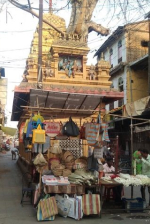
ARCHIVING CLIMATE CHANGE INDUCED ARTISANS RESILIENCE IN THE WESTERN INDIAN OCEAN REGION
Climatic disasters often posit severe challenges to human endeavours for livelihood and survival skills.
View more
June 12
9:00 am

FEELING LIKE A FOREST
What might the historical record of human-ecology relations sound like? The languages of people that live intimately with the forest embody generations of ecological knowledge and adaptation.
View more
In addition to lexicons of flora, fauna, and landforms, linguistic performances and oral arts give form to the experiences of living forests. In many languages, a special class of words called expressives or ideophones enables speakers to depict vivid sensory perception making use of culturally specific linkages between sound and meaning. In the Bit language spoken in northern Laos, expressive words also preserve ancient grammatical rules that allow them to mark a range of temporal and spatial experiences that cannot be done in “regular” verbs and adjectives. Listening to expressives that Bit speakers use to depict life in the forest highlight intersections between cultural/linguistic history and dynamic human/non-human dependencies, we can get a sense of how people feel about the forest, how they feel in the forest, and perhaps how it feels to be a forest.
June 12
10:00 am
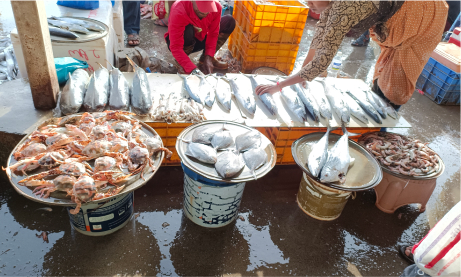
FISHSCAPES: ANCHOVIES, NAIRS, AND THEIR FISHY EPISTEMOLOGIES
Sunil D. Santha, Centre for Livelihoods and Social Innovation, School of Social Work, TISS
This paper is about Fish, Humans, and their entangled patchy epistemologies. Autoethnographic by design, I have adopted a posthuman lens to interweave diverse knowledge frames.
View more
Both Anchovies and Nairs are positioned as analytical metaphors to explore the entangled nature of Fish and Humans in a more-than-human world. A few years ago, I wrote a paper exploring the changes happening to middle-class Nair families near Technopark in Thiruvananthapuram, Kerala. The analysis then followed more of a humanist lens with Nature in its periphery and was specific to the contexts that prevailed before the outbreak of the Covid-19 pandemic. Simultaneously and distinctly, I also studied the transitions happening to small-scale fisheries in the context of modernisation, development, and climate change. Both works never gazed at each other.
However, post-pandemic, as I engaged more with posthuman literature, I could see the entangled emergent relations between Fish, Fishers, and Fish Consumers. This paper explores the patchy epistemologies that shape the entanglements and transitions between the Fish (Anchovy) and the Fish Consumers (Nair Women, Men, and Children). As the title of this paper mentions, such an approach is quite fishy in terms of its thinking and approach, which could also evolve as its strength, showcasing newer possibilities of archiving environmental change. Fish-Fisher entanglements are not the prime focus of this paper, which I have dealt with elaborately elsewhere. Instead, here the focus is on the entanglements between Fish and Fish eaters.
Anchovies were once part of the staple diet of the Nair households that I am describing in this paper. These small, shiny fish were a delicacy as a curry that went well with smashed and cooked tapioca or jackfruit and with rice. Fried anchovies were a favourite among children. Dried anchovies and chutneys made from them were the primary sources of protein supplements during the lean fishing seasons, the monsoons. However, these days very few households buy anchovy. My inquiry for this paper begins here. How did the anchovy disappear from our everyday life? What does it say about modernity, development, and environmental change?
June 12
11:30 am
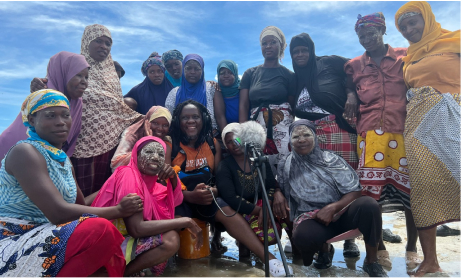
A SONIC APPROACH TO VERNACULAR ARCHIVES AND CULTURAL MEMORY OF THE FISHING COMMUNITIES OF MOZAMBIQUE ISLAND
Mozambique Island, a UNESCO World Heritage site off the coast of northern Mozambique, is renowned for its diverse cultural history shaped by African, Arab and Portuguese traditions.
View more
The island is home to fishing communities deeply connected to the Indian Ocean, carrying their distinct cultural practices and knowledge across generations.
However, the intersection of vernacular archives, cultural memory, and sound in these communities remains understudied.
This paper explores the role of sound, particularly fisherman and chocolo women songs (anthropophony) and environmental sounds (geophony), in the preservation and transmission of cultural memory within these fishing communities.
Cultural memory is a central topic in the humanities and social sciences, examining how memory is collectively constructed and transmitted in diverse cultural contexts. Scholars like Halbwachs (1925), Nora (1992) and the Assmanns (1994) have explored the role of social context, institutions and historical events in shaping cultural memory. Recently, sound has gained recognition as a research method for studying cultural memory and vernacular archives. Sound captures intangible aspects of cultural heritage, revealing lived experiences and social dynamics. Sonic methods like sonic ethnography Sterne (2003) and Feld (2012), and soundwalking Schaffer (1994), Truax (1994) and Pijanowski et al (2011), allow for direct engagement with communities, uncovering embodied practices and the meanings attached to sounds, providing deeper insights into cultural significance.
A sonic ethnography approach was employed for this project, involving immersive fieldwork and data collection. Audio recordings were captured using a combination of 360° and stereo techniques, to capture fisherman and chocolo women songs, and environmental sounds. Interviews were conducted to delve into the cultural meanings and significance attributed to these sounds. The collected audio recordings and interview transcripts were examined through interpretive analysis, including close listening, transcription and thematic analysis.
The analysis focused on identifying recurring themes, patterns and meanings within the sonic elements of vernacular archives. It also explored the role of soundscapes, music and other sonic practices in the preservation and transmission of cultural memory. Specific case studies were examined to illustrate how sonic elements contribute to the cultural memory of fishing communities. The sonic approach shed light on the unique aspects of cultural memory within fishing communities and provided a deeper understanding of their cultural identity and socio-environmental relationships.
The findings were interpreted in relation to existing literature on cultural memory and vernacular archives. The implications of the sonic approach to studying cultural memory in fishing communities were analyzed, highlighting its potential for capturing intangible aspects, engaging with sensory dimensions, and amplifying marginalized voices. The discussion explored the challenges and opportunities of incorporating a sonic approach in the study of cultural memory, including the historical and societal factors contributing to the marginalization of certain communities in official archives. The paper also addressed the need to overcome visual bias and methodological challenges to embrace the significance of sound in shaping memory and cultural identity.
This project’s sonic approach to studying the vernacular archives and cultural memory of fishing communities on Mozambique Island, offers valuable insights into the role of sound in preserving, transmitting, and shaping collective stories. By uncovering the complexities surrounding representation and inclusion, the study emphasized the empowering potential of songs as forms of cultural resistance and preservation. The findings contribute to the field of cultural memory studies and vernacular archives, offering recommendations for future research and exploration of sound-based approaches to enhance community identity, resilience, and social justice initiatives.
June 12
1:30 pm

A SONIC APPROACH TO VERNACULAR ARCHIVES AND CULTURAL MEMORY OF THE FISHING COMMUNITIES OF MOZAMBIQUE ISLAND
This study aimed to reconstruct Txina-Txina site (located between the junction of Machampane and Chifati rivers, Southeastern Mozambique) paleoenvironment and site formation processes.
View more
June 12
2:30 pm

KAMMAKAMMA/ THE EERSTE RIVER IN FRAGMENTS
My presentation to the group some months ago focused on sand as a lens to explore environmental change in and around a sacred Muslim tomb (kramat) located on the False Bay in South Africa, which has been part of my research for some years.
View more
The text I’ve submitted for this workshop is a creative piece that stems from my interest in the environment that surrounds the tomb. While sand forms a part of the story I’ve attempted to piece together, the main environmental focus is the Eerste River. This 40 km-long river flows past the kramat and into the False Bay. My piece serves as a contribution to a broader sound and visual work about the Eerste River by South African artist Abri de Swart. You can read about this project, entitled kammakamma, here.
In this text, the river offers a way for me to rethink the archival and oral history fragments I collected during my research that, when placed in conversation, demonstrate the river’s entanglement with many layers of history and memory. This includes the social history of Cape Town’s marginalised populations, early modern forced migration in the Indian Ocean world, and the locals’ personal stories.
The text is written to be performed (as part of a screenplay), but I hope to adapt it for publication, hopefully alongside your pieces. I’ve left in the comments that reference the
intended performance.
June 13
09:00 am

THERE’S A BUG IN MY MEDIA: INSECTS, COLONIAL ARCHIVES AND BOOK HISTORY
Traditionally a ‘dry’ discipline little concerned with ecocritical themes, book history has started to engage with environmental humanities in a more sustained way.
View more
June 13
10:00 am
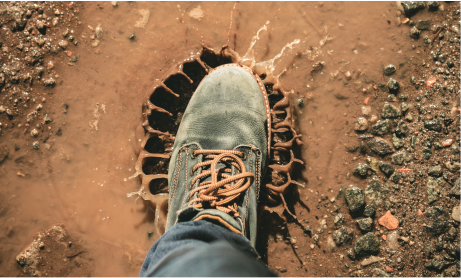
THE IMPORTANCE OF LISTENING TO MUD
What does mud sound like? Sloppy, drippy, squelchy, oozing, belching, splattering – are these the words that come to mind? Or is that just a conception of mud from our limited human interactions with muddy environments?
View more
Mud is a kind of living mausoleum, or an eclectic library whose pages are all stuck together. Like these places, mud is an environment that starts from nothing and then accumulates. Mud has a preference for collecting things that are miniscule, malodorous and apparently no longer wanted elsewhere. Collectively these things can tell a story, and that story could have its own soundtrack. From this point of view, if mud could speak it might sound a lot like the environments that contributed to making it and remain inside it as traces and fossils – an ecosystem in miniature. This essay explores the idea of mud as an archive of environmental change, one that can help piece together a richer, multisensory experience of the past.
June 13
11:30 am
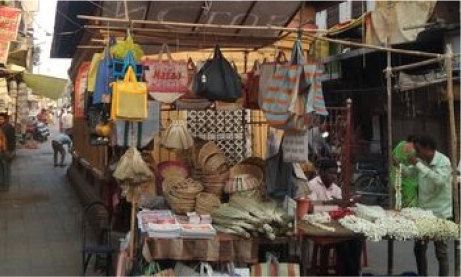
ARCHIVING CLIMATE CHANGE INDUCED ARTISANS RESILIENCE IN THE WESTERN INDIAN OCEAN REGION
Climatic disasters often posit severe challenges to human endeavours for livelihood and survival skills.
